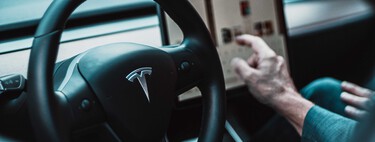One of Tesla’s keys to improving its driving assistance systems —and developing future fully autonomous proposals— is to have enough computing power to process the huge amount of data that comes from many cars on the streets. . To meet this challenge, the company last year introduced one of the most powerful artificial intelligence (AI) supercomputers in the world. Now, after a GPU upgrade, it’s much more beastly.
Tesla’s original supercomputer configuration for AI had 720 nodes, each consisting of eight 80GB Nvidia A100 GPUs, for a total of 5,760 GPUs. With the recent addition of another 200 nodes of the same characteristics (1,600 GPUs), it reaches a total of 920 nodes, representing 7,360 GPUs. This upgrade makes the cluster the seventh most powerful supercomputer in the world, as explained by Tim ZamanTesla’s director of engineering on Twitter, although this capability has not yet been publicly evaluated.
The fact that the system cannot be evaluated means that it cannot officially form part of the top500 of the most powerful supercomputers in the world. In doing so, it would face systems with similar calculation capacity, such as the Perlmutter (6,144 Nvidia A100 GPUs) or the Selene (4,480 A100 GPUs). However, Tesla at the moment does not open the door for this to be allowed, although beyond the aforementioned ranking, the important thing is the benefit that the company can get from this system thate will precede a much more ambitious one called “Dojo” which could be ready by the end of this year.
What role does the supercomputer play in Tesla?
The evolution of autonomous driving systems, at least as proposed by Tesla, requires the parallel development of many fields, precisely because what must be achieved is that a car reacts like a human —or even better— in any type of scenario. . So the signature train deep neural networks on issues ranging from perception to control through the raw images captured by many of their cars. The supercomputers perform semantic segmentation, object detection, and monocular depth estimation.
In addition, they learn from the situations of human driving in the race. With this, broadly speaking, Tesla can improve driver assistance systems through updates and point in the direction of the long-awaited fully autonomous driving system, which Elon Musk has been hinting at for some time. And of course, there’s a lot of other technology in cars too, like machine vision cameras, autonomy algorithms (which algorithmically design accurate real-world terrain data), and FSD chips that run autonomous driving software.
As we can see, making the cars of the present and the future inevitably requires exploring new areas. Supercomputing and artificial intelligence are two of the great pillars of Tesla. The company is so involved in them that, in addition to promoting the aforementioned technologies, it is one of the sponsors of the Machine Learning & Systems Conference of Santa Clara and next September 30, like every year, will celebrate the Tesla AI Dayrevealing his latest advances in the field and how he’s applying them to further his current and future plans (we might even get our first look at the robot Optimus).
In Xataka | The waiting list to buy a Tesla in Spain is endless. Skipping it has a price: €11,000 more












Add Comment